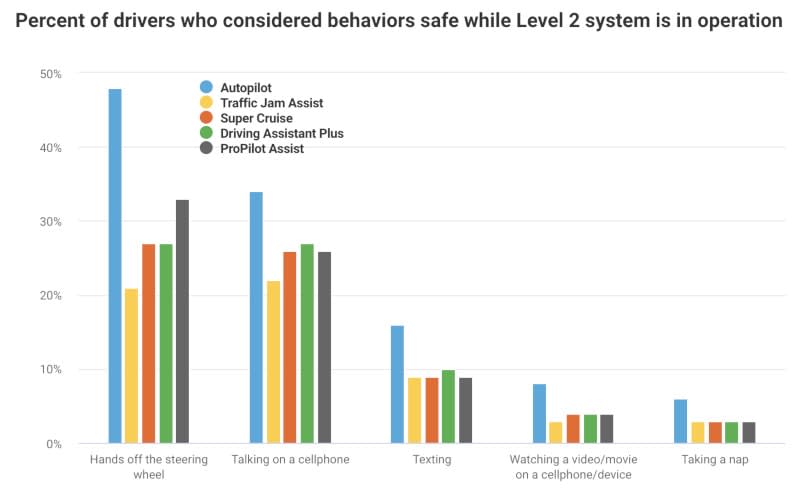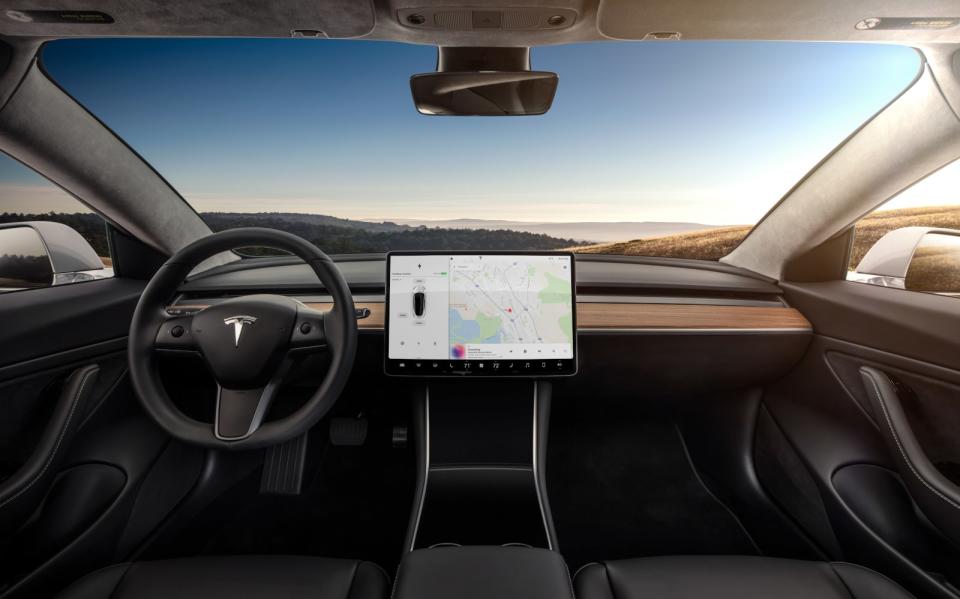Drivers may overestimate Tesla Autopilot because of its name, study suggests
It's unclear how many survey respondents had driven a Tesla before, though.
Tesla's Autopilot system might have a catchy name, but it may send the wrong message to drivers, according to a study by the Insurance Institute for Highway Safety. A survey the non-profit organization conducted revealed that a lot of people don't fully comprehend newer cars' actual level of automation, because their driver-assistance systems have names that seem to overpromise. The name Autopilot, in particular, is causing drivers to overestimate the technology's capabilities.
IIHS asked 2,000 drivers to answer questions about Autopilot (Tesla), Traffic Jam Assist (Audi and Acura), Super Cruise (Cadillac), Driving Assistant Plus (BMW) and ProPilot Assist (Nissan). They found that 48 percent of the participants thought it would be fine to take their hands off the wheel in a Tesla, whereas only 33 percent thought that about ProPilot Assist. A total 34 percent even thought it's OK to talk on the phone with Autopilot in charge. Thankfully, only six percent thought they could nap while Autopilot is engaged. The other systems got much lower percentages in all instances.

The current iteration of Autopilot only reaches level 2 in the driving automation scale and still requires drivers to keep their hands on the wheel. Not doing so could be very dangerous -- in fact, some fatal crashes involving Tesla vehicles in the past happened because drivers didn't have their hands on the wheel like their cars instructed. As Ars Technica noted, though, it's not entirely clear how many of the 2,000 participants have actually driven a Tesla. They might have thought that it's OK to talk on the phone or nap while Autopilot's on, because they had zero idea about what it could do.
Another IIHS study found that information displayed on instrument clusters could be confusing to drivers, as well. The organization asked 80 volunteers to watch videos showing the instrument cluster of a 2017 Mercedes-Benz E-Class with the Drive Pilot system. While half of them went through a brief orientation about the system's adaptive cruise control and lane-centering features, most couldn't understand what was happening when it couldn't detect any of the vehicles ahead. That happens when other vehicles on the road are beyond the range of detection.
In addition, even those who received training were often confused when Drive Pilot's lane centering becomes inactive. The best solution, of course, would be to make instrument clusters more intuitive. But as IIHS said, providing comprehensive orientations for new owners at the dealership could help.


